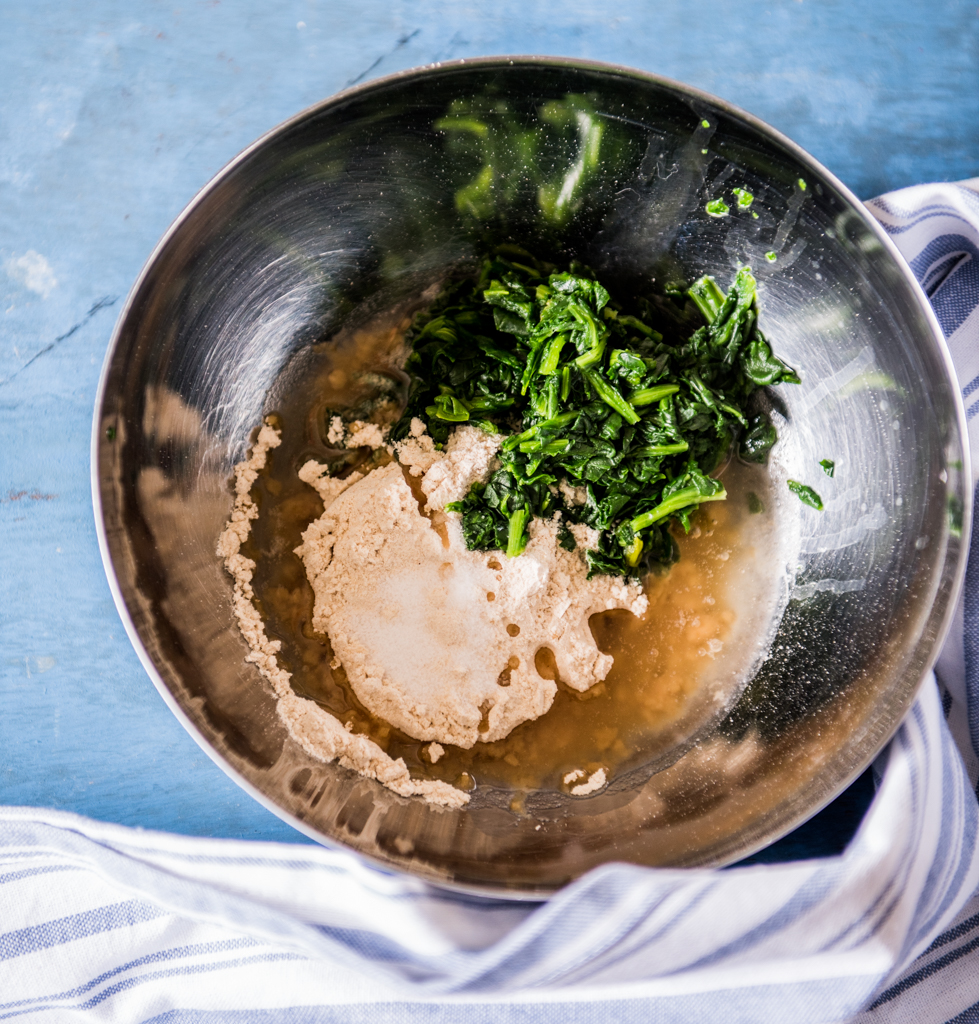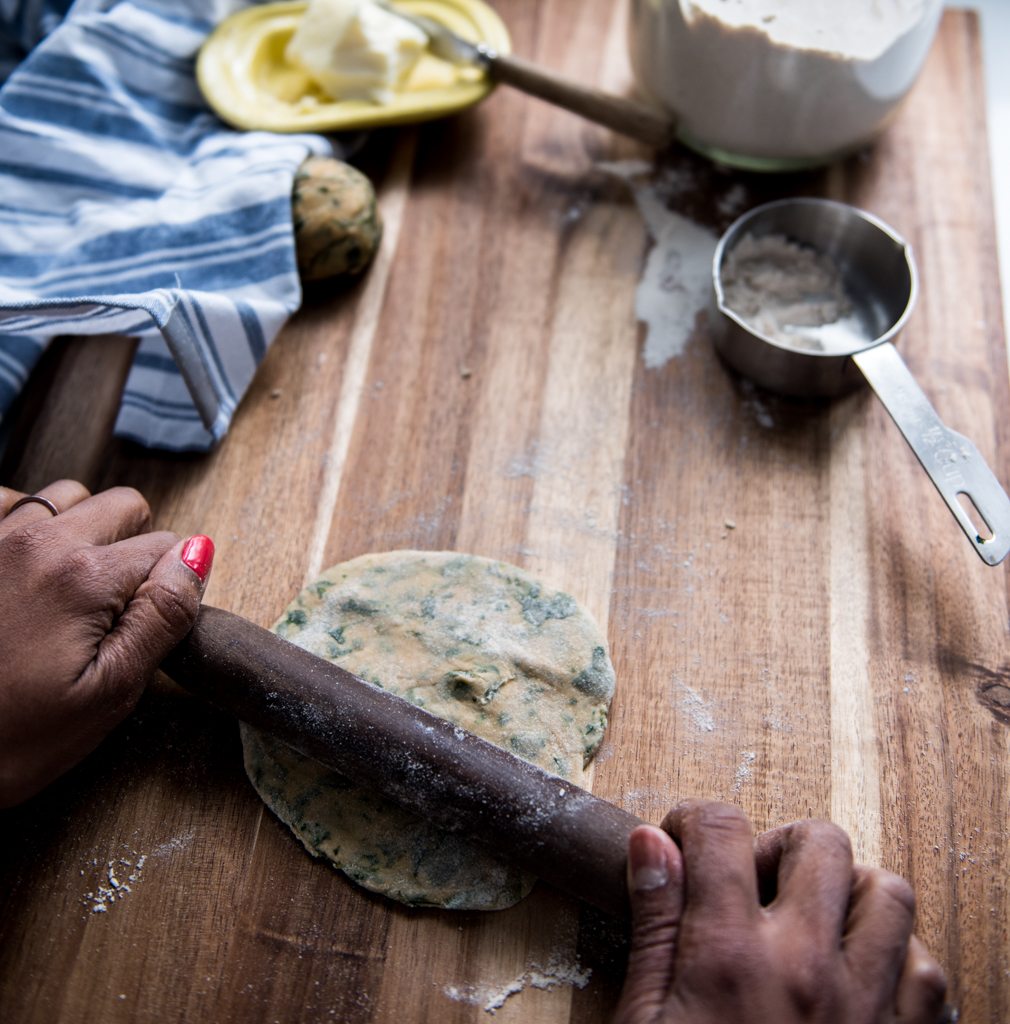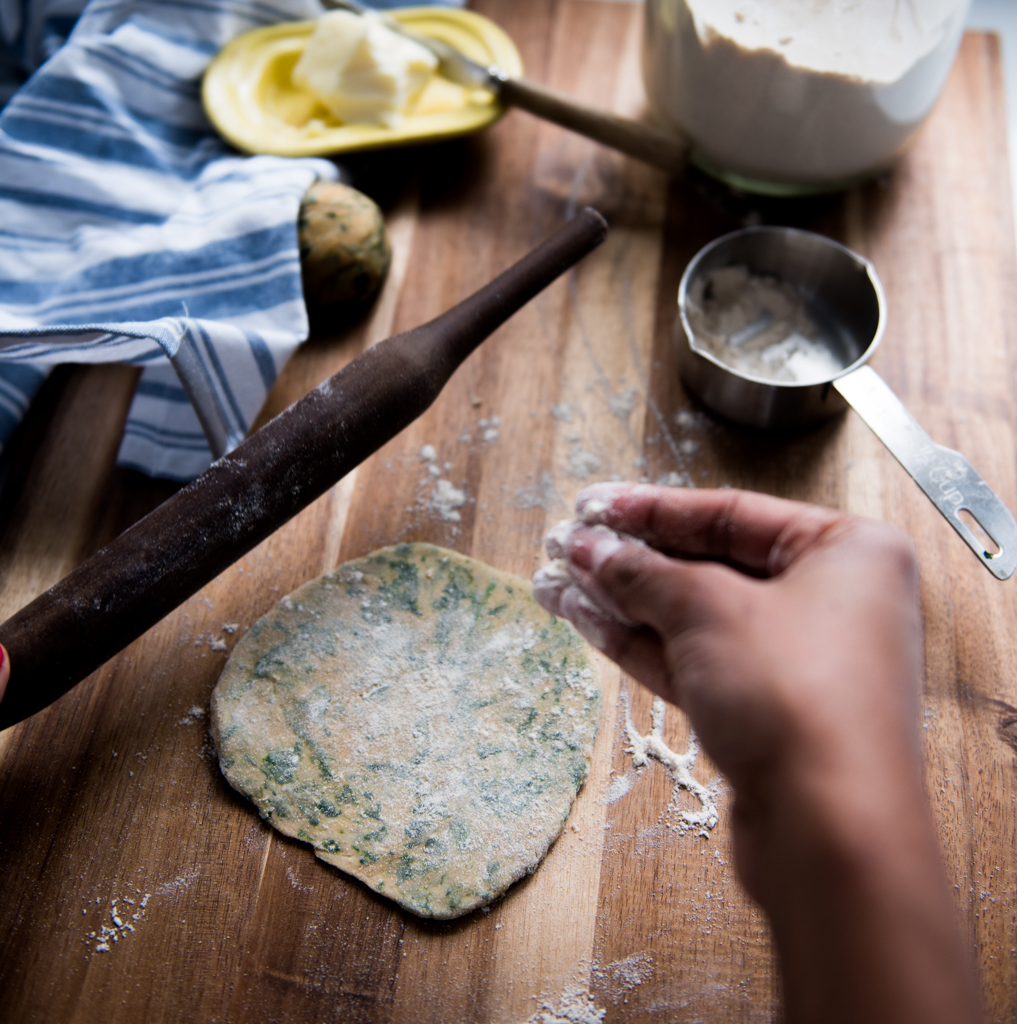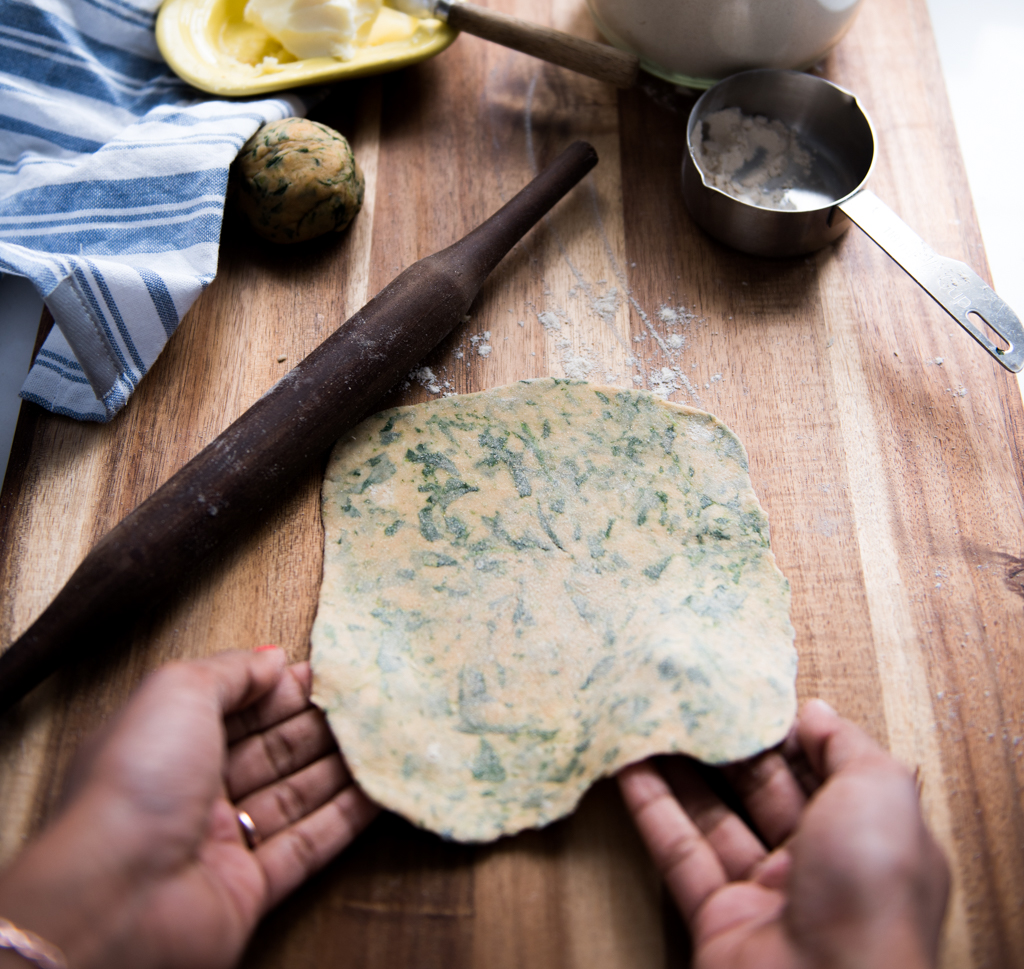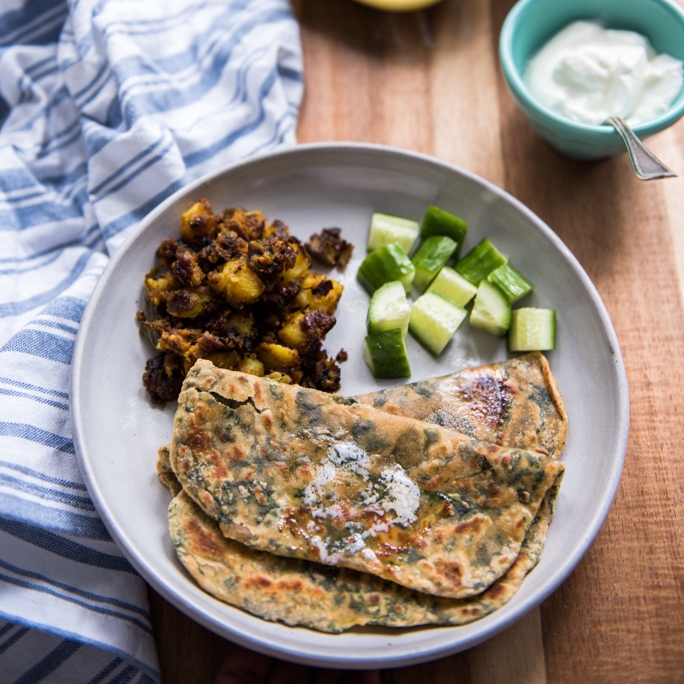I grew up omnivorous by culture, and, largely vegetarian by economics. I say vegetarian but really vegan; Because other than milk and yogurt, other dairy, like butter, ghee, ice cream, were all still too expensive to be 'normal' consumption. In general, we cooked with peanut oil, made ghee with the butter that was churned from the daily whole milk delivery, and, rarely ever bought butter. There is also that, the South does not have fatty cows like the North or even the middle of the country. So, our consumption of dairy fat is limited to ghee (the nectar of Gods!) and we don't have a butter tradition. That said, any animal product was a luxury growing up. We ate meat/fish once a week, typically Sundays and any leftovers was relished as long as it lasted. If net worth was measured by the sticks of butter used per month or the pounds of meat consumed, today, I would be considered ultra rich many times over compared to then and many, many Indians, even today. {For a peek in to today's common person Indian life stories, check out @farandfurtherand @sarkababicka who have been touring and short-staying in India for the last month and more!}
As to meat, it was 98% chicken. We ate a lot of fish and some prawns and crabs. Living in Chennai, fish was abundant and cheap, bought from the street vendor fisherwomen (wives of fishermen), or at the big, open air fish market in Saidapet. Chicken in India was rarely ever fat or big breasted and we never really got to choose parts. We typically bought half to one kilo (1-2 pounds) of chicken every week. That could be a whole bird freshly slaughtered for you or pieces leftover from the previous customer and a new slaughter. The 'butcher' (a fancy word really) was a shop with no refrigeration or even a fan, chicken in cages ready for destiny, a big slab of wood on which the slaughter happened, and, baniyan and lungi clad men (bare hands!) wielding cleavers who killed, cleaned and chopped up the pieces. There was no option of boneless, it was all in. There was a simplicity and transparency to this whole process that I cherish in hindsight.
We typically went twice to the chicken shop - once for the Sunday meal and another during the week to buy heads and feet to boil and mix for our dogs' meals. As it happens, the chicken shops are usually located somewhere between the gentrifying areas we lived in and the less gentrified ones fairly adjacent to poorer quarters. What was 'dog food' in our house, I knew even then, was all a lot of the poor people could afford, even occasionally. I knew we didn't have a lot, eating meat once a week, but it was certainly a whole lot more than many around us.
These days, I am frequently reaching back to the nostalgia of my childhood food routines and I am leaning more and more towards vegetables. I crave them (and, bananas! Read my last post on a bit of my childhood addiction for them). Being a tropical country, our markets were overflowing with a wide variety of vegetables and a wider depth of variations within each category. It was never just eggplant, but different kinds of it. Then, there were gourds or what are called squashes here. Oh my! A whole class of under appreciated vegetables, until you no longer have access to them. But the king of all vegetables in an indian household, was the Potato! Cherished for its year round availability, versatility, wholesome satiating abilities, and, its cheapness, we ate potatoes a lot! As much as the Irish... true story! I love potatoes, especially, those chopped small and pan fried crisp with mustard seeds and spices. Lip smacking good!
Ironically, when I moved to the US, the two food items I drastically cut down on, were potatoes and chicken. I found the supermarket 'versions' of these bland, unappealing and an overall insult to my palate. Besides I was so much more distracted by the oh-so affordable other proteins - red meat (that I adored and only got luxurious sporadic taste of in India), eggs (I never liked eggs much in India. They had a stronger flavor, that now looking back was a sign of them being real and not mass produced!) and well, just the easy availability of every other new and exotic cuisine.
Yet, when the desire strikes, you solve for those obstacles that you could have easily put into the back burner with other distractions. I found a dependable butcher who sources from small scale farms that raise their birds on pasture and humanely. I found local farmers markets, where the potatoes tasted mineral-y enough to be flavorful. And, then building on that solid ground, spices always help with bringing the memories together with reality!
So, there is the long introduction to today's stars - the humble potato twice cooked to make the kickassest "Masala Home Fries" or what were just regular old everyday urulaikazhangu varuval in Tamil (or Aloo Sabzi in Hindi) - a spicy Chennai pepper chicken fry (millagu kozhi fry)that was one of my favorite preparations of chicken, bone and all - and - the everyday staple (particularly since i was a non-rice conforming South Indian), chapattis elevated with some greens and lots of butter to parathas.
South India sits squarely in the rice bowl given the rainfall pattern, natural irrigation and soil types. Wheat is not grown as much here. Yet, I was not much of a rice eater. I just found it too filling and to be an overarching food group on the plate, what I really enjoyed were the sides (vegetables or meat) and yogurt. But, occasionally, when I went to Udipi or Andhra restaurants, I loved eating the 0- courses that were rice mixed with a variety of table condiments and lots of liquid ghee (only hotels have liquid ghee! At home, it is always in a semi-fluid state). One of my favorites is paruppu podi. Literally translating to 'lentil powder', it is a finely ground powder mix of roasted lentils with whole spices. There is the Iyer/Iyengar (TamBrahm) podis of Chennai and the spicier Andhra podis, the latter had considerably more roasted dry red chili and other spices ground into the mix. Obviously, the latter was my choice, but, in a pinch, the brahmin versions will do just fine! The photos above are how you would eat them. The above plate would also be a typical first course in vegetarian houses, followed by Sambhar, rasam and curd rices. {For a peak into our typical home meals, read this post}
Spinach Parathas
The trick to making parathas is the double roll. The dough itself has a higher % of fat to begin with. Then after the first roll, you spread more butter/ghee over the flat disk and fold it back into a tight bun and re-roll into a disc, creating the layers and flakiness. Always better to be liberal with the butter on all counts for flakier, tastier results!
Also, for any roti, indian dough preparation, I recommend using warm water to mix. It makes the dough softer and the rotis fluffier. If you have it, the best would be warm whey (like that leftover from making cheese).
1 cup finely ground spelt flour or atta
1/2 cup thawed spinach
3/4 tsp salt
1 T melted butter
2 or so T warm water
more ghee or butter for rolling, cooking and finishing as needed
{you can also use oil in place of butter everywhere if you choose to. Coconut, peanut, sunflower or vegetable oil are best. I would not recommend olive oil}
In a bowl, mix all the ingredients together and knead into a soft tactile dough. Cover and let it sit for 10 -30 minutes.
Divide into 6 balls. Roll each between the palms of your hand to make seamless balls of dough. While working on one keep others covered with a towel.
Heat a flat bottom pan (cast iron is best) on medium high heat.
Using a gentle dusting of flour, roll out one ball to about 5-6 inch disc. Generously spread butter/oil over and starting at the far roll the disc into a go and then tighten into a bun tucking the seams into the center.
Roll out the dough again, using a sprinkling of flour to prevent the dough from sticking.
When the pan is hot, transfer the disc to it and when it puffs up turn it over. Spread more butter/oil on the flipped side and turn it over again. Cook both side till you see little spots of brown and no spots of raw dough. You will need to flip more than twice.
When done, place the cooked paratha on a plate, drop a bit of butter like you would for a waffle and cover to keep warm while you finish the rest.
Chennai Pepper Chicken Fry
The use of this dish can be traditional Indian, certainly, served with roti or dal and rice. It is also fantastic in tacos, as pizza toppings, or on a stick as lollipops or over couscous or pilaf.
You can always make more of the 'gravy' or the sauce (especially when served over dry rice) by doubling the onions and cooking them down in a touch more oil.
Do not add any liquid while cooking this dish. The flavor comes from the meat cooking in its own juices and pan crispness of browning. If it starts sticking, just lower the heat. The sticking is typically solved by having enough oil in the pan to prevent it!
6-8 pieces of chicken thigh, cut into smaller pieces, marinated for atleast 30 mins (up to overnight) in a little salt and turmeric
1 small onion finely diced
4 T of whole black pepper, crushed as fine as you like
1 tsp ground turmeric
2 tsp mustard seeds
7-8 curry leaves
1 tsp asafetida
salt to taste
oil to cook
cilantro or parsley for garnish
Heat oil in a pan and toast the mustard seeds till they start to pop. Add curry leaves, turmeric and asafetida and stir till no longer raw. Add onion and cook till well done and reduced to half.
Add the chicken pieces and black pepper. Cover and let it cook in its own juices for 20 -25 mins, turning the pieces over occasionally for even browning.
Serve garnished with chopped cilantro or parsley.
Aloo Sabzi a.k.a Masala Home Fries
Make these for breakfast alongside oozy eggs for kickass flavor. Or as the Parsis do, make it a whole meal by just sprinkling some whisked eggs over a pan of these for Aloo pe Ida!
By trial and error, I have found the best varieties of potatoes to use for this dish are basic russet and basic red potatoes. The waxier variety, baby or fingerlings do not have the same starchiness to give the oomph.
4 -5 boiled russet or red potatoes, skin removed and chopped into rough inch sized pieces
4-5 whole green Indian chilies (you can use Mexican or Thai small chilis), finely chopped
6-7 curry leaves
1 tsp whole black mustard
2 tsp whole cumin seeds
2 tsp urad dal (optional)
3/4 tsp ground turmeric
3/4 tsp asafetida
oil and salt as needed
In a pan, heat oil and toast all the spices together with the curry leaves and chilies, stirring continuously to prevent burning.
When the spices no longer smell raw. Add the potatoes and top off with a little more oil.
Toss the potatoes to coat with spices evenly. Cover and cook on low-medium for 10-15 minutes, stirring occasionally to get an even browning.
Serve garnished with cilantro.






